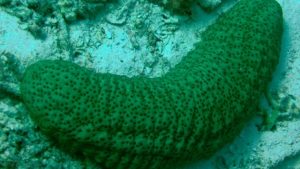
Jamaica has been looking at the feasibility of sea cucumber export in recent times, says Caribbean Regional Fisheries Mechanism Executive Director Milton Haughton
The Caribbean has the potential to generate more income from the fishing industry by increasing the range of products pulled from the sea for export, according to a regional fisheries official.
“We want to improve our basic capacity so that we are not only exporting (the usual), like Jamaica which exports conch and is top in the region in terms of conch export, but there are a whole range of other marine species that have the potential for international fame, so we want to look at and develop all these other species,” Milton Haughton, executive director of the Caribbean Regional Fisheries Mechanism (CRFM) Secretariat, has argued.
According to Haughton, the Caribbean has approximately 500 to 600 species of fish and other marine life, but the region is only exporting a small number of them.
“Some of the species are not present in huge quantities, but you can develop specialised niche markets,” he said. “Sea cucumber is something I know Jamaica has been looking at in recent times. There’s an excellent market because these are really high-value products, so we are trying to put in place the systems to be able to take advantage of this,” Haughton said at a news conference at the 15th meeting of the Caribbean Fisheries Forum (CFF) at Knutsford Court Hotel in Kingston recently.
The CFF is responsible for identifying technical and scientific work done within the CRFM.
The Caribbean, Haughton said, exports about 70,000 metric tonnes of fish each year, the majority of which are classified as high-value species such as lobster, conch and shrimp.
He noted, however, that in the case of Jamaica, the island can be classified as a net importer of lower-value species of fish such as dry salted fish, sardines and mackerel, which are higher in nutritional value and so are brought in for food security purposes.
“So overall, we export between US$300 million and US$400 million each year altogether… so it seems significant. but we are net exporters… we are investing in building our export capacity, which is why over the past two years we’ve been focusing on improving systems, legal regulatory framework, arrangements for cooperation at the regional level,” Haughton explained.
He also noted the importance of producing value added products for the global market and explained that the CRFM is forging relationships with key countries excelling in this area, such as Norway and Iceland.
Haughton said that both countries are using fish, in addition to other marine resources, in a way that is ahead of the Caribbean — to get more value for their products.
“So, no longer are we looking at fish as only a commodity for consumption, but also now as the basis for cosmetics and pharmaceuticals. and there are a wide range of pharmaceutical products made from fish products currently discarded by our countries,” he said.
“The things that we dump — fish bones for example — these things can be processed and made into very valuable products, such as fish leather, band aids, medicine and a whole lot of stuff,” he continued.
These are some of the issues the region’s fisheries will address moving forward, through the increased use of science and technology in order to transform and use the raw materials, which will in turn help create employment, new products and open new markets, Haughton said.
He noted that through modernisation as well as building a foundation in sustainable fisheries systems, the region can go a far way.
“The markets are there. fisheries is one of the fastest- growing sectors in the world, so the market is tremendous, both for fish as food as well as for other uses, as mentioned before,” he said. “We have to capitalise on these resources going forward. I do hope we will give the necessary attention and provide the necessary resources, and work with our developmental partners.”
